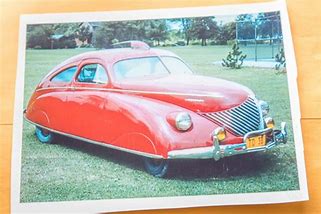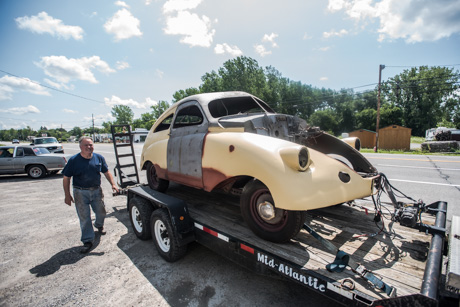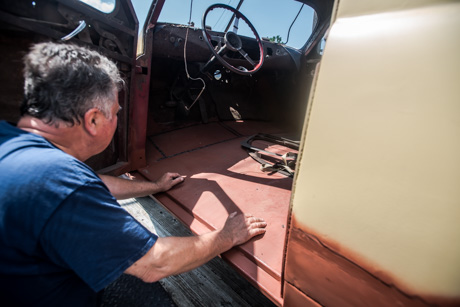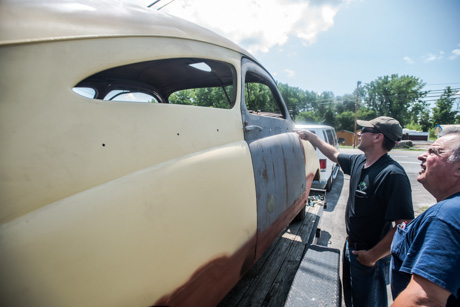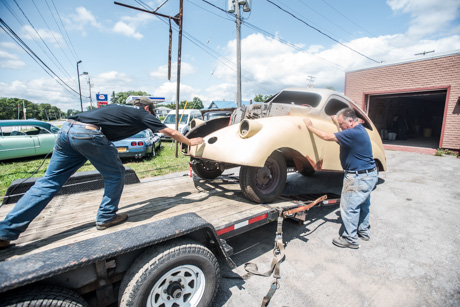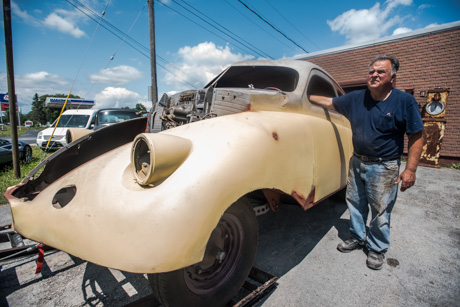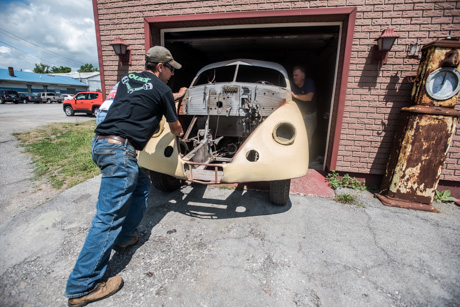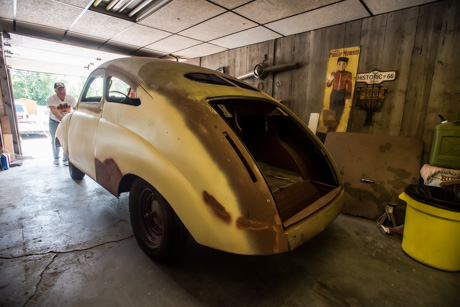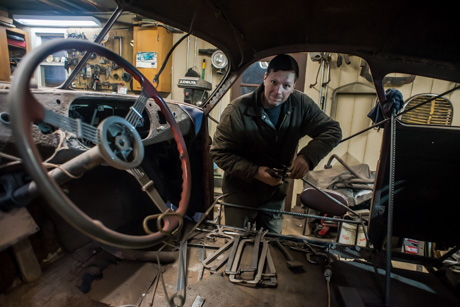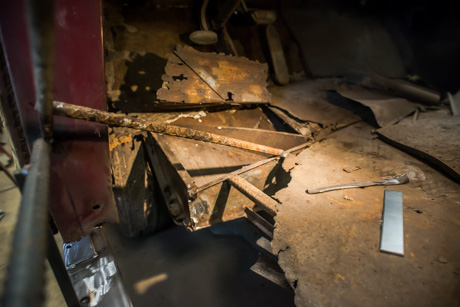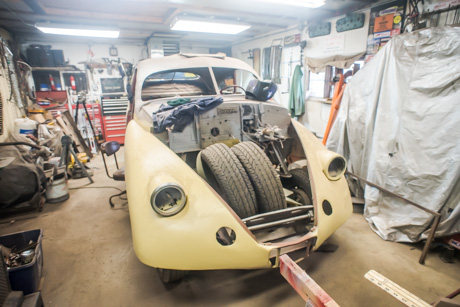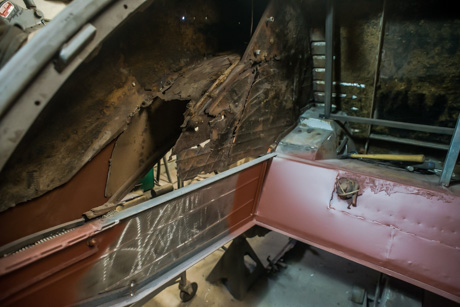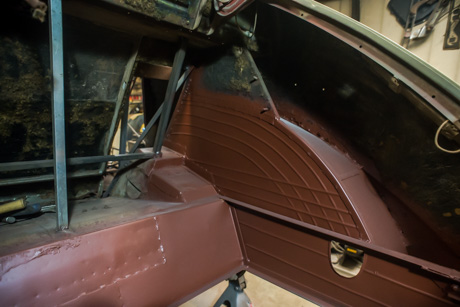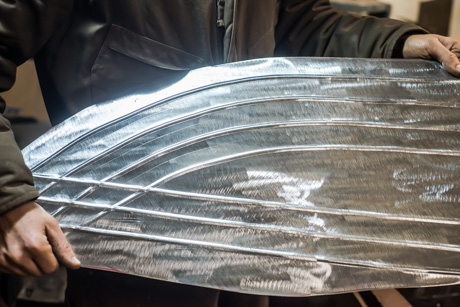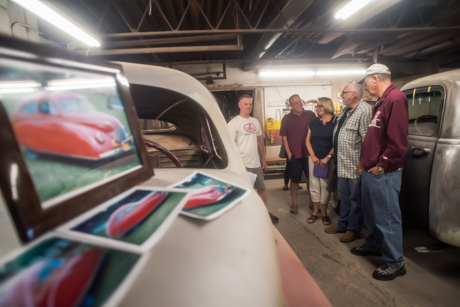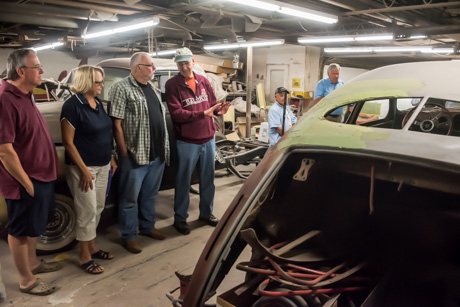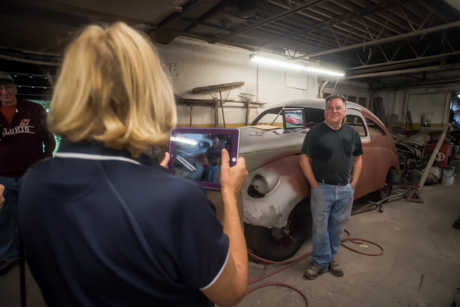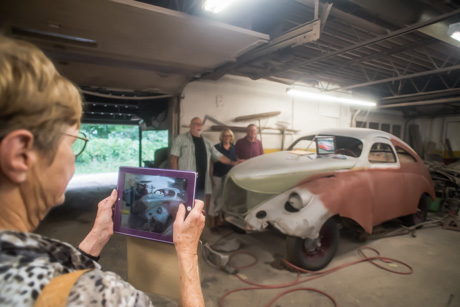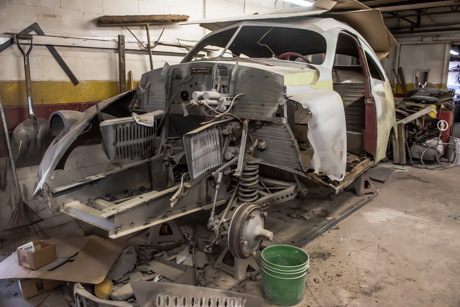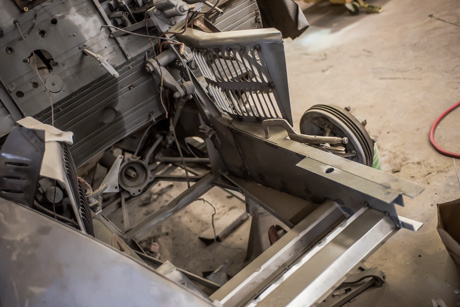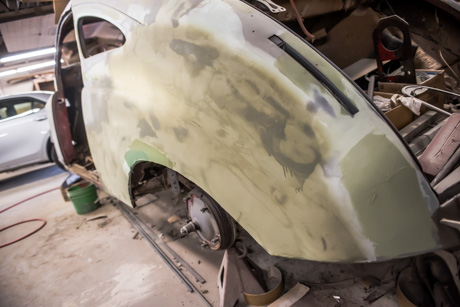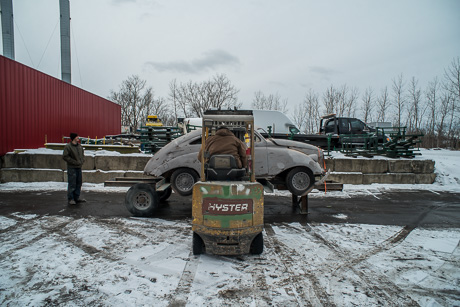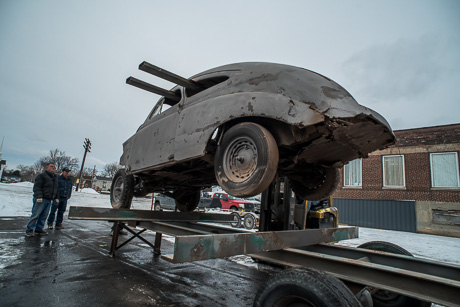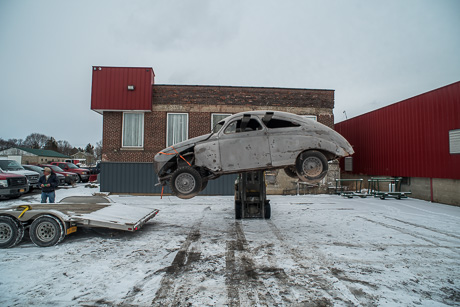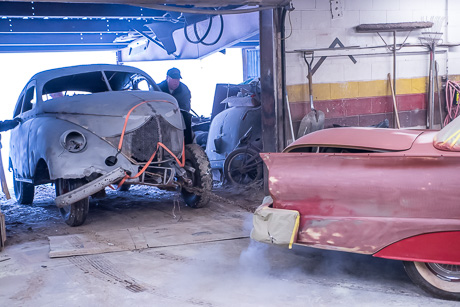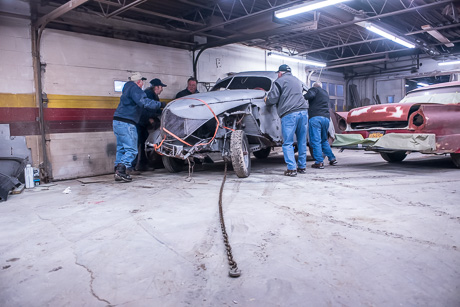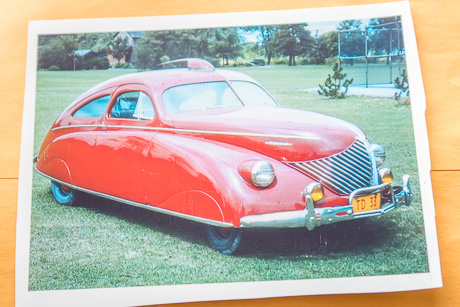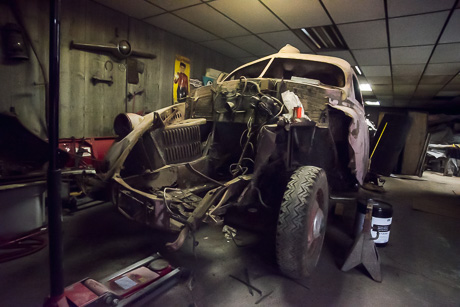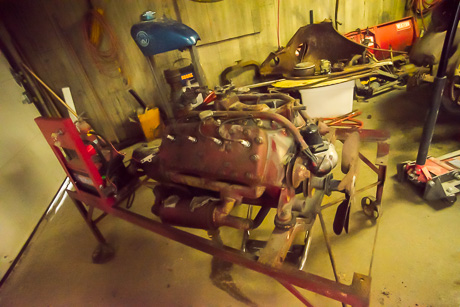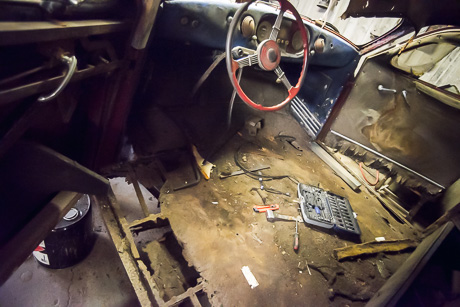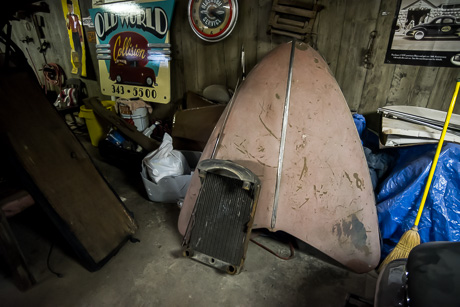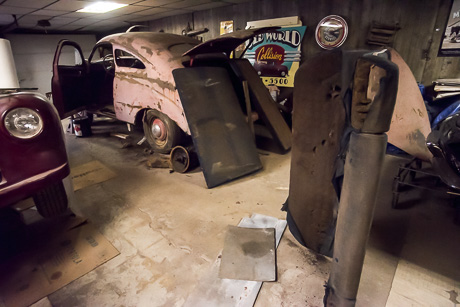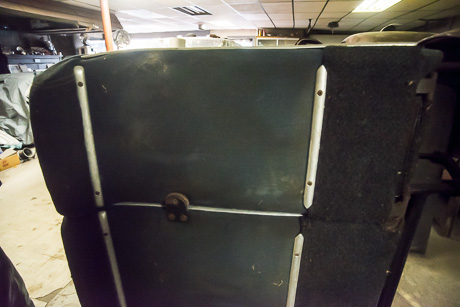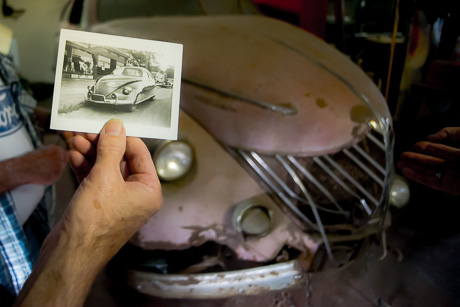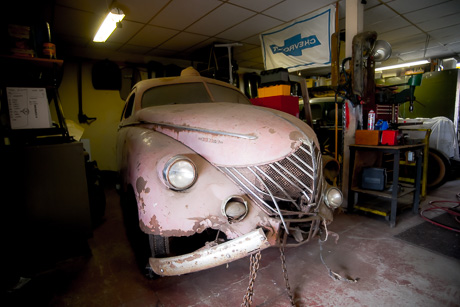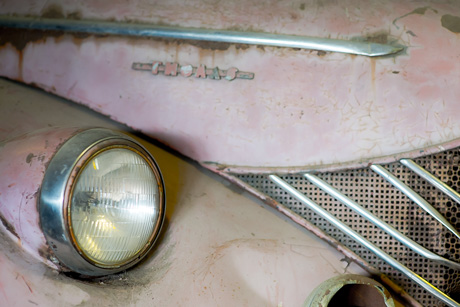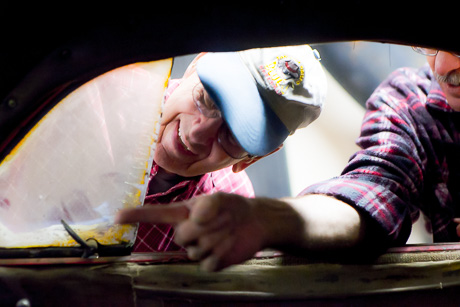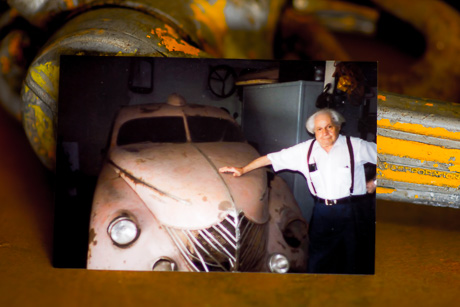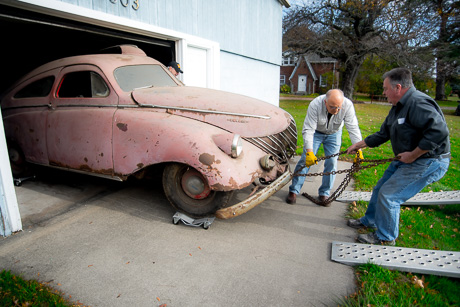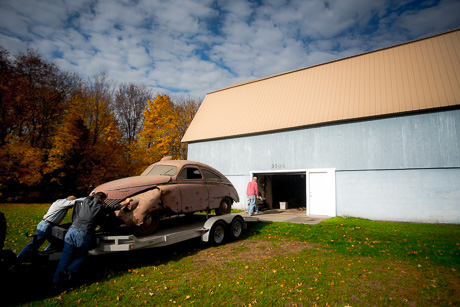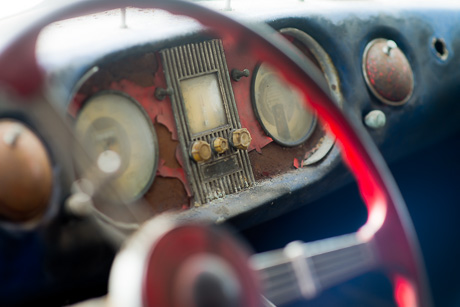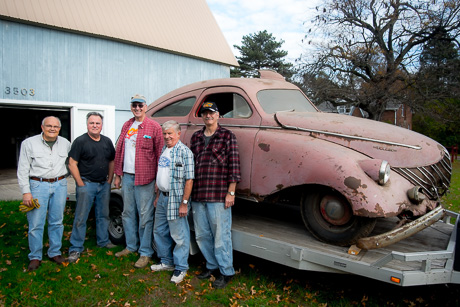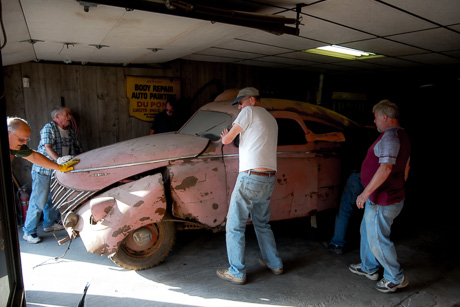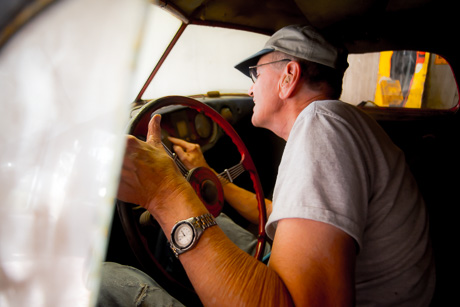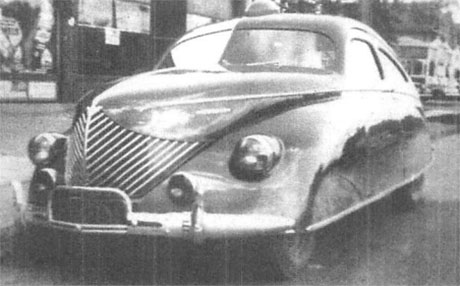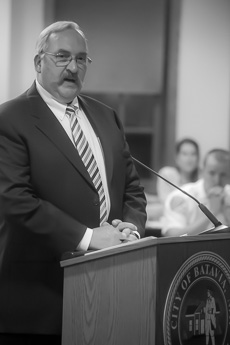Batavia's Thomas Rocket Car finds 'fitting home' in Buffalo automotive museum
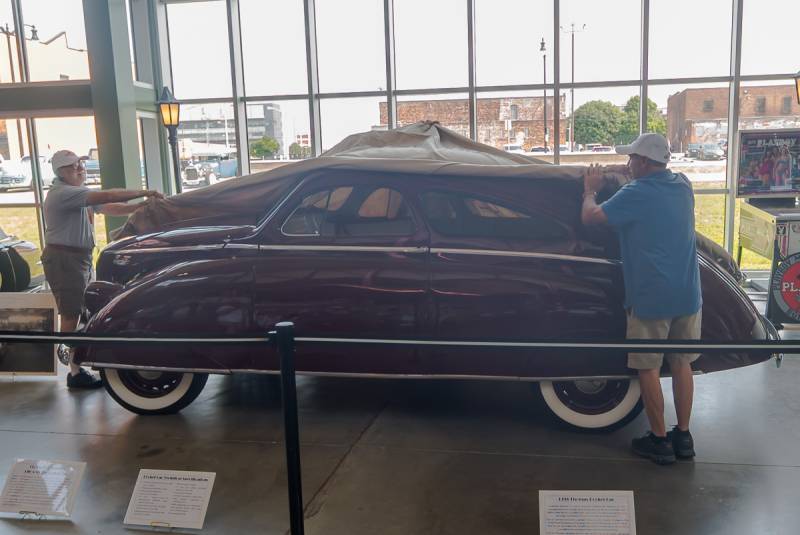
Photo by Howard Owens.
A unique and significant object from Batavia's history is now permanently displayed in Buffalo at the Pierce Arrow Museum at 263 Michigan Ave.
There is no other car in the world like the Thomas Rocket Car, built by Charles Thomas and Norm Richardson from 1935 to 1938 in a garage at the corner of Main Street and Ellicott Avenue in Batavia; the concept car was years ahead of its time. He had a periscope (or "Ventriscope" as Thomas called it), anticipating backup cameras on many vehicles built these days, mounted on its roof. It had independent four-wheel suspension, unheard of in the late 1930s. There was also extra padding -- before the invention of airbags -- to protect occupants in a crash.
The refurbished Rocket Car currently sits next to another of Thomas and Richardson's contributions to automotive history—the prototype of the Playboy, a tiny single-passenger car that the Playboy Motor Car Company made in Buffalo in 1947. Only 97 Playboys were ever manufactured, and the automotive museum has a handful on display.
"For us, it's a big deal to have a Thomas car but to have the Thomas Rocket Car is very important," said Jim Sandoro, museum founder. "If you look at all the publicity the car got nationally and internationally, and even right now on the internet, when you look up the car, you find fabulous things written about it."
The museum took over the restoration project from a group of Batavia automotive enthusiasts in 2023, putting together all of the final and finishing touches.
The original restoration group included Ken Witt, Dick Moore, Dave Howe, Dick McClurg, and Josh Quick, Jeff Ackerman, among others.
In 2015, the group intended to restore the car and find a home for it in Batavia. The City Council of 2015 agreed to accept the car as a donation if a suitable place to store it and display it could be found. That place was never found, and the restoration effort became cash-strapped, which is when Sandoro stepped in.
"We're the Buffalo Transportation Museum, which is Western New York, of course," Sandoro said. "As soon as I saw it a few years back, I said, 'Boy, if it doesn't happen the way they think it is going to happen, we could finish it. I made it known at that time, but then I stepped back and let everything happen. There was some progression, and it did. And I'm so happy. ... It just worked out. It worked out. It was meant to be."
There were about 100 people on hand for the unveiling on Saturday morning, including Thomas family members.
Jeff Thomas remembers how proud his father was of the car. He drove it for years until one day, the engine didn't get enough fuel going up an incline, and it stalled on railroad tracks.
"My mom said, 'That's it. I'm never driving the car again," Jeff said. "So that was the end of it being used as our family car, but it got a lot of looks around town and stuff like that because it's obviously very special."
The car, Jeff said, meant "Batavia" to his dad.
"That's where he grew up," Jeff said. "That's where he made the car. I even ran into a guy who happened to be the grandfather of a guy I worked with in a pizzeria. And he said, your dad was from Batavia. And I said, 'Yeah,' and he goes, 'Thomas.' 'Yeah.' And he goes, 'I used to ride around in this car he was building in the 30s before the body was on it.' They would ride around Batavia on just the chassis. So you run into people, you know, that have a connection to the car. It's just part of history. So it's great."
The car was also unique for its hidden door hinges, low-set headlamps, one-piece frame, independent front and rear breaks, and no running boards.
The engine was 80 horsepower and, for the time, got a fuel-efficient 15 miles to the gallon. It had a top speed of 80 mph and could comfortably seat six.
Sandoro confirmed that if Batavia ever wants to "borrow" the car for display, he would make it available. It would need covered transportation and insurance, he said. When the time is right, Batavia Downs might make an appropriate place to display it, he said.
Councilman Bob Bialkowski presented a Batavia City Council proclamation and praised people like Charles Thomas, who helped build Western New York, as "people with vision and determination."
He recalled seeing the car for the first time after it had been recovered from a barn in Lockport in 2015.
"It was just such a disaster," Bialkowski said. "If it wasn't rusted, it was broken."
He especially praised Dick McClurg, proprietor of Old World Collision on West Main Street Road, Batavia, where much of the restoration was completed.
McClurg said the Pierce Arrow Museum is a "fitting home. I think it's really fitting."
He said, "The museum made it look good."
"I wish I could have met Thomas. I really do. But I feel he was with me the whole time I was working on it," McClurg said.
When Thomas showed off his car in Detroit, experts agreed it was at least a decade ahead of its time.
But timing and circumstances were not on the side of automotive innovation. War was looming in Europe. Preston Tucker's then-recent failure to bring a safety-first mass-produced sedan to the market scared off the Big Three automakers in Detroit. They may also have felt threatened by all the innovation or decided it was just too expensive to retool to build such a futuristic car.
Whatever the reason, once the Rocket Car was done, Thomas never built another one. It became the family sedan and a showpiece for auto dealers on visits around the region.
Once the car disappeared from sight, it sat in a field in Batavia for years before a car buff in Lockport, Gary Alt.
Alt, whose antique car collection consists of dozens of Chevys from the 1930s, found the Thomas wasting away in a field in Batavia in 1977 when he drove out here with the intention of buying a 1934 parts car. When he saw Rocket Car, he had no idea what it was. He'd never seen it before or heard of it, but he knew it was unique and worth saving, so he bought it and the parts car and hauled them back to his farm property near Lockport.
Eventually, he tracked down the car's provenance and interviewed Thomas and Richardson in Buffalo, leading to a magazine article Alt wrote about the car. When that article reached local car enthusiasts who had long wondered what had become of the futuristic vehicle, they contacted Alt and arranged to buy it from him and retrieve the dust-covered relic from his barn.
The Thomas family has tracked the progress of the Rocket Car's restoration since it was recovered from a barn in Lockport in 2015. Family members at the unveiling on Saturday seemed thrilled to see it again in all of its original pristine glory.
"It's great for our family, great for my dad," Jeff said. "I mean, he deserves to have this in a place where people can see it instead of in a junkyard or something. So it's just fabulous. We're so happy."
For all of The Batavian's previous coverage of the Thomas Rocket Car, click here.
For a photo slideshow of the Rocket Car's restoration, click here.
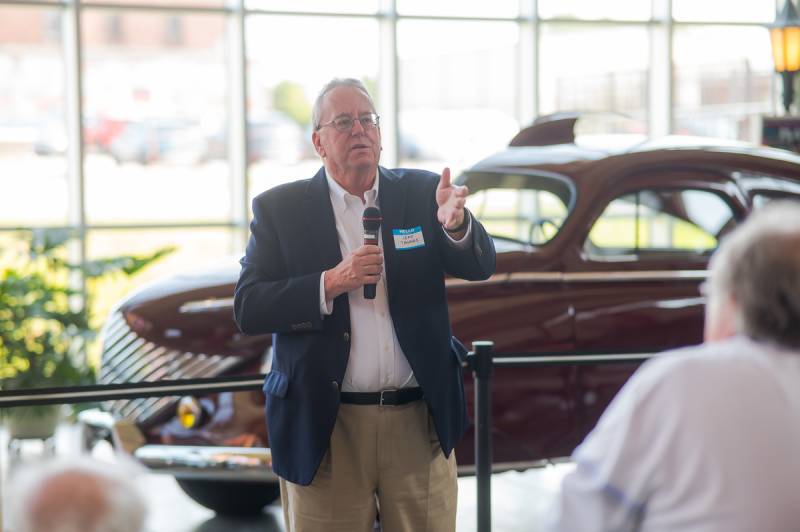
Photo by Howard Owens.
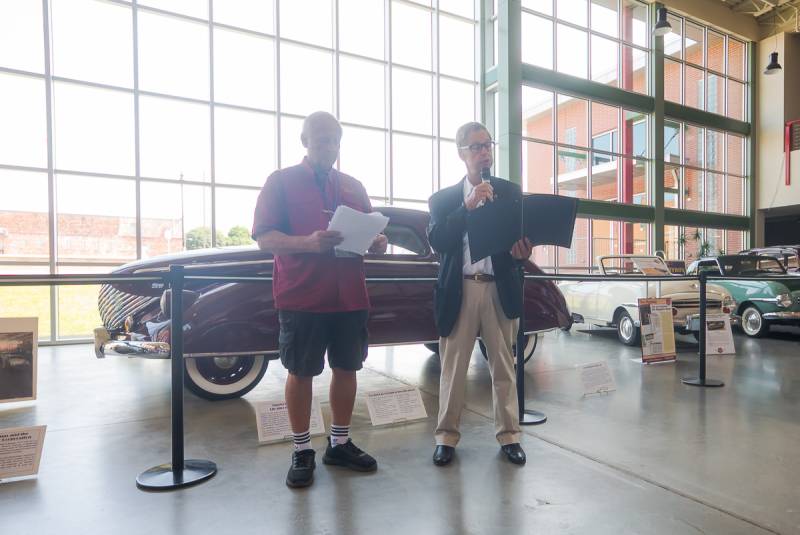
Photo by Howard Owens.
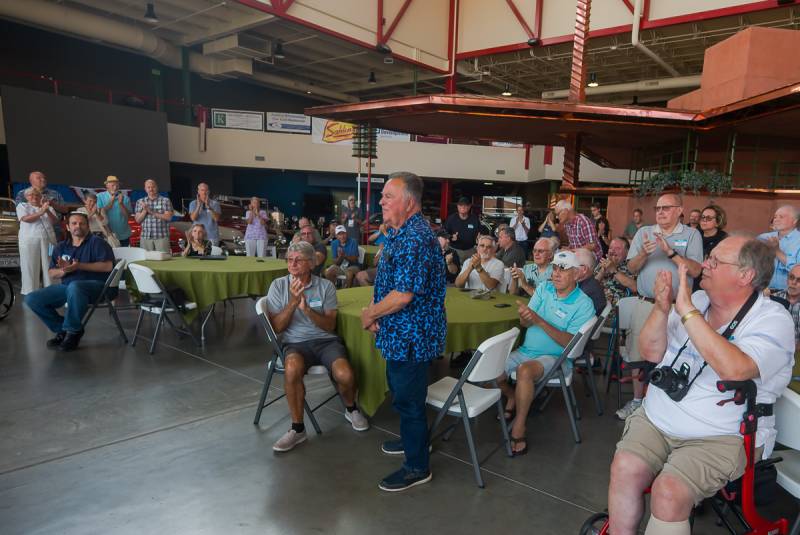
Photo by Howard Owens.
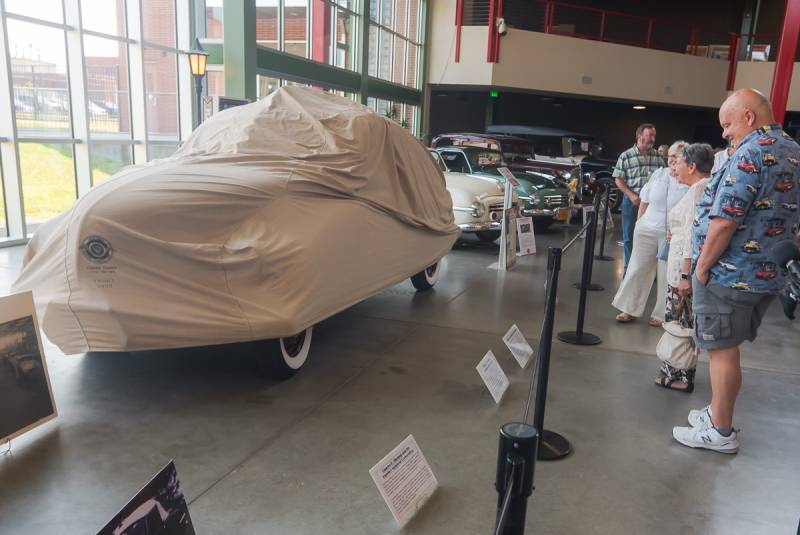
Photo by Howard Owens.
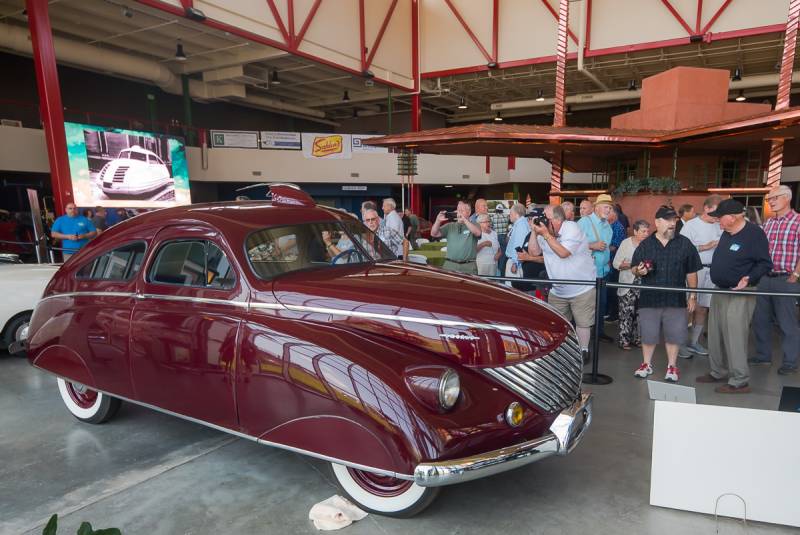
Photo by Howard Owens.
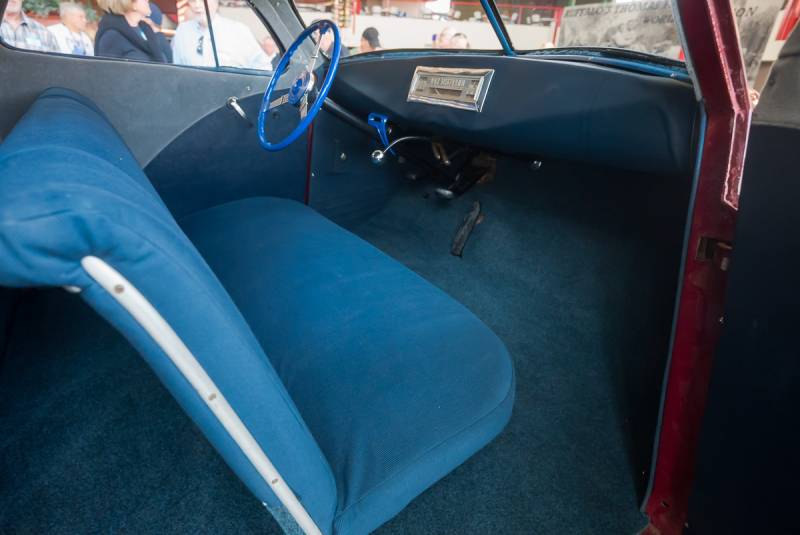
Photo by Howard Owens.
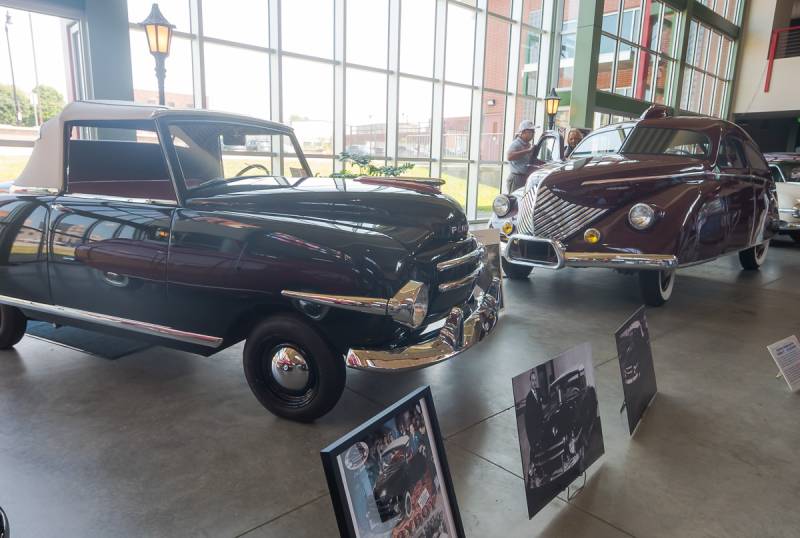
Photo by Howard Owens.
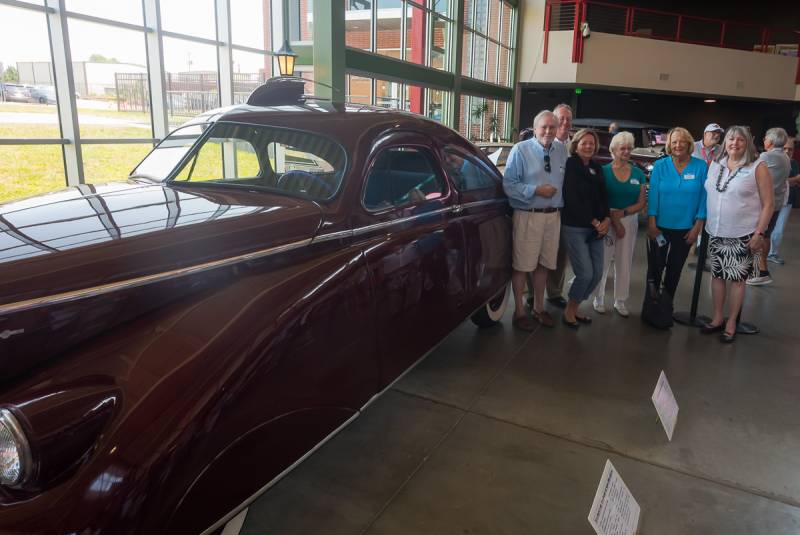
Photo by Howard Owens.

